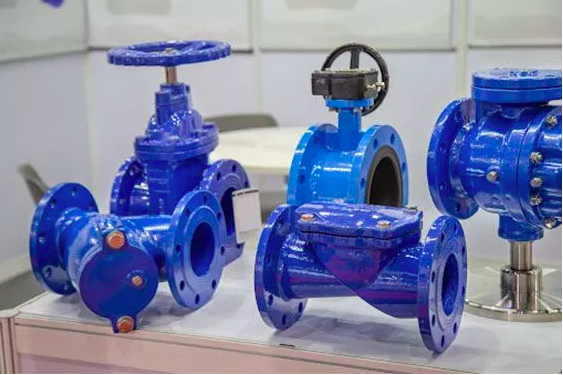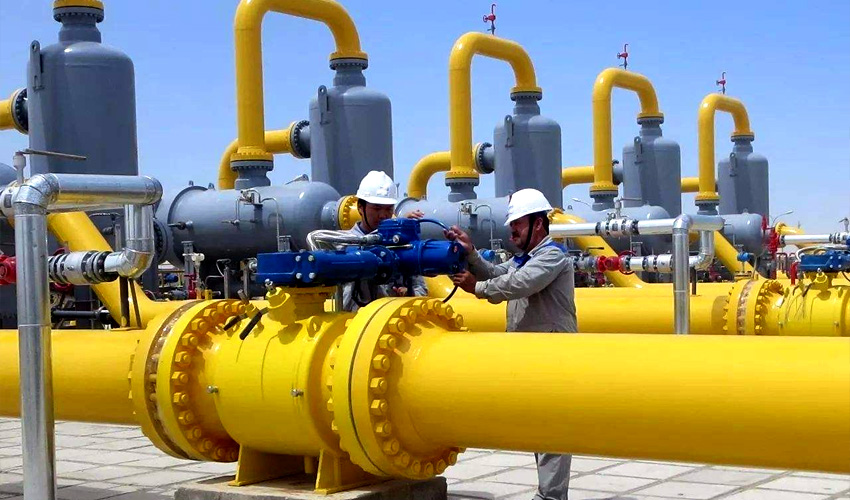
From refining to distribution, pipeline systems play a significant role in oil and gas operations. It is therefore crucial for companies to have reliable control systems and infrastructure. In this scenario, oil and gas valves must be used in industrial pipelines to ensure their safety.
In piping applications, fluid flow and pressure are controlled, regulated, and opened/closed by valves. Although valves are technically fittings, they are usually treated as individual components. For example, a valve opens when fluid flows from higher to lower pressure. Several mechanical parts make up a valve, including the body, the gasket, the stem, and a drive mechanism.
VALVES USED IN THE OIL AND GAS INDUSTRY CAN BE CLASSIFIED ACCORDING TO:
DISC TYPE
- LINEAR MOTION. The valves are gate, globe, diaphragm, sandwich and check valves.
- ROTARY MOTION. Butterfly valve, ball valve, plug valve, and swing check valve.
QUARTER-TURN. Devices that require approximately a quarter-turn motion, from 0 to 90°C of the stem, to move from fully close to a fully open position or vice versa.
BODY MATERIAL
- STAINLESS STEEL. Stainless steel makes many industrial valves. Each gauge requires a precise mix of chromium, nickel, or molybdenum. In addition, stainless steel valves are suited for handling corrosive media such as saline marine water, acids, and halide gases as they do not rust the valve’s body. In some cases, brass can be a suitable replacement for steel.
- CAST STEEL. Cast steel valves are formed by pouring molten steel into a mould before allowing it to solidify under controlled conditions.On the one hand, if done correctly, this procedure produces solid valves and is a practical, low-cost production method. However, on the other hand, it requires continuous monitoring and quality control because it is prone to holes and tears where the molten steel has not formed evenly. Furthermore, if the molten steel is of poor quality, the valve will also be faulty.
- FORGED STEEL. Forged steel valves are made using extreme heat and mechanical equipment. Instead of being poured into a ready-made mold, the steel is bent and molded into a valve shape using tools. This benefit is that heat tends to harden the metal, resulting in stronger and longer-lasting valves. On the other hand, the connections between various elements may be a source of leaks because it is constructed as a whole. Forged steel valves are likewise more expensive due to the extra labour involved.
TYPE OF ACTUATION
- The valve is operated manually via levers, wheels, and gears.
- ACTUATED. The valve is actuated by electromechanical devices called actuators, which can be electric, pneumatic, hydraulic, or gas-on-oil.
- BALL VALVES. You can rely on a ball valve for quick shut-offs and airtight seals in piping applications. The shape and size of a ball valve can vary. There are different types of pipelines that are suitable for different pipeline situations. Therefore, evaluating the pipeline’s characteristics is crucial before selecting a ball valve. All that holds a floating ball valve together is its stem and seats. Fluid pressure pushes the floating ball into its seats, thereby closing the valve. When liquids flow through a spout at high pressure, it takes considerable effort and torque to open the valve because it must push the ball against high pressure. Floating ball valves are therefore recommended for low- and medium-pressure oil and gas pipelines.As opposed to a trunnion ball valve, which relies on fluid pressure to hold the ball in place, the ball on a trunnion ball valve is mounted. Low torque also allows a ball to open and close against force. Therefore, it is the best option for high-pressure applications.
- GATE VALVE.A gate valve does not affect oil and gas flow rates since it allows unfettered flow. These properties make it suitable for piping, where it must maintain flow while controlling flow rate. In addition, when open, the disc of a gate valve leaves the pipeline’s channel unobstructed, allowing slurry fluids such as crude oil to pass through.
- BUTTERFLY VALVE.A throttle valve essentially makes up for what a gate valve lacks in performance. Open channels allow media to flow freely, even containing solid particles. Since the stem at the base of a butterfly valve holds its disc in place, you can use it in high-pressure piping. Its low-torque operation is also a result of these design attributes.
- GLOBE VALVE. You can close the globe valve using a pin plunger to stop the airflow. The linear valve opens and closes when the actuator is rotated.Extending this valve to various levels is possible due to the threading on the stem. The popularity of this sort of valve in the petrochemical industry can be traced back to this fact. It can reduce the opening size depending on how much throttling is required. The valve is designed to reduce pressure. They have a sloping angle at the bottom, where they meet the piston.As the fluid flows through the raised cavity, it loses momentum. Globe valves are therefore ideal for piping systems that require pressure management.
- CHECK VALVE.A pressure-sensitive valve like a check valve is suitable for conducting separated petroleum products. The valve opens when the inlet pressure is higher than the outlet pressure. There is, however, a restriction of media flowing backward. A check valve is a one-way valve that prevents fluid from flowing back. It might be helpful at the refinery stage of a fossil fuel plant when segregated petroleum products are routed into different pipelines to retain their integrity. There’s also the possibility of utilizing it in distribution pipelines where it must always direct the flow forwards.
- PLUG VALVE. A plug valve has a larger diameter piston than a globe valve. So even though it isn’t the best choice for throttling, it can hold its own in a pipeline. The plug’s greater surface area allows pressure to be distributed and dissipated with the plug while maintaining fluid flow regulation. Actuators control the socket, which can be operated manually or automatically. It allows dense petroleum products to flow unhindered. A plug valve can be recommended for unrefined oil products, such as those used in biogas generation.
The reliability and ease of use of BCST products make them a favorite among customers. Technical training, application assistance, complete maintenance, and support are all part of our comprehensive service for valves.
If you have any questions regarding valves, please email us at [email protected] or visit our website at www.bcstgroup.com.







